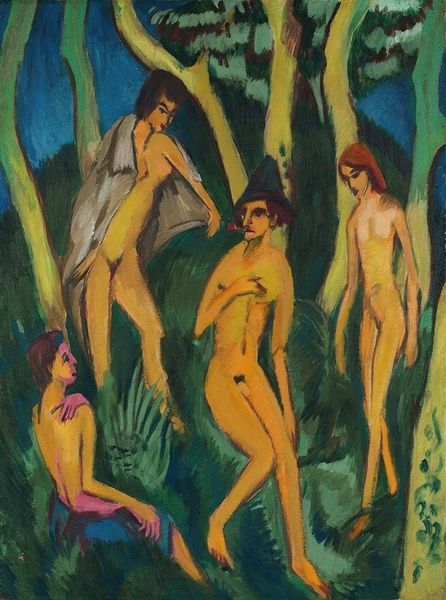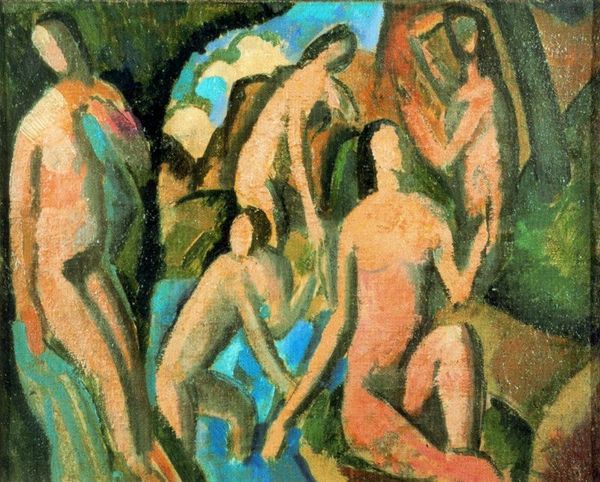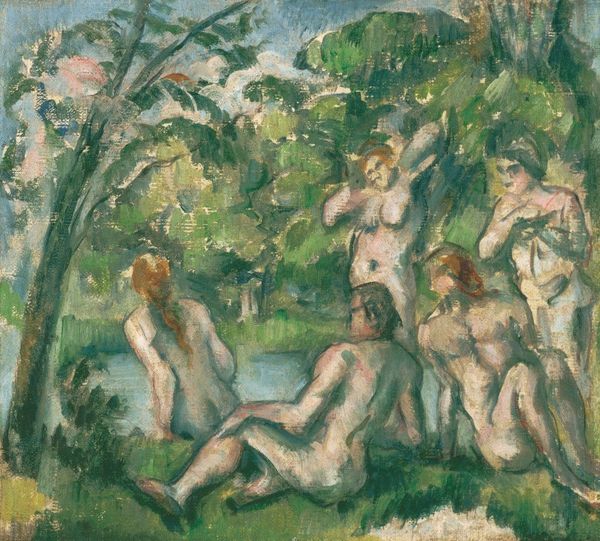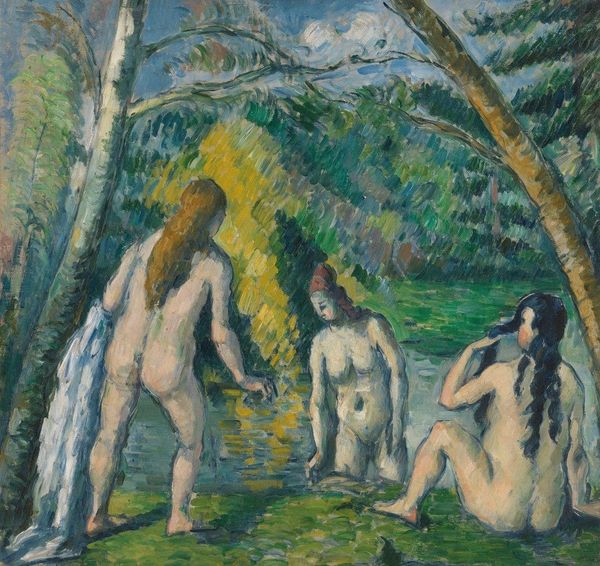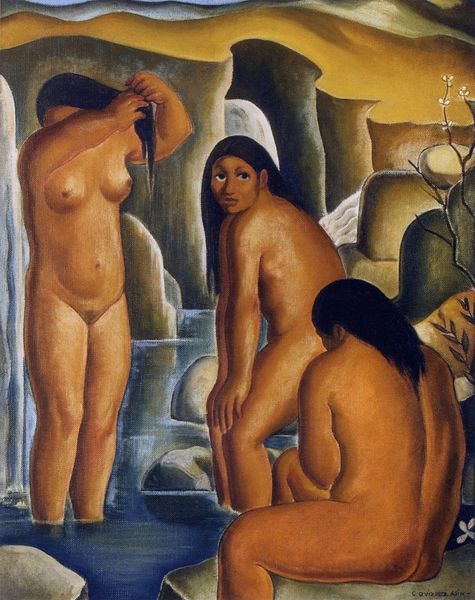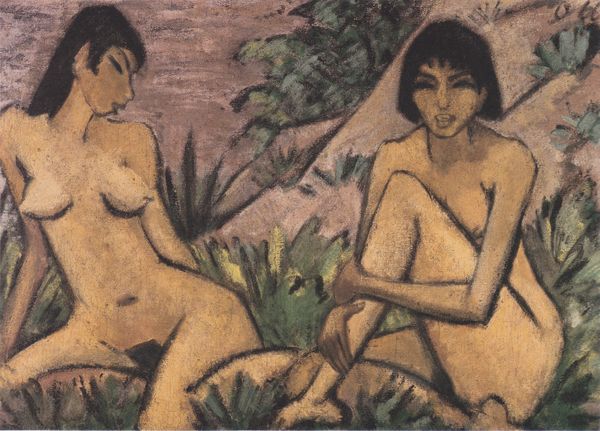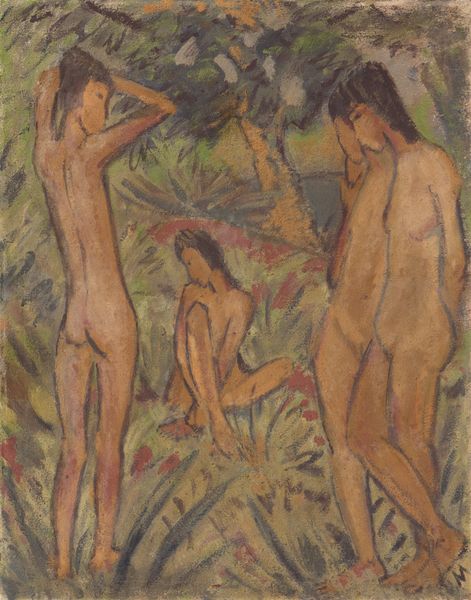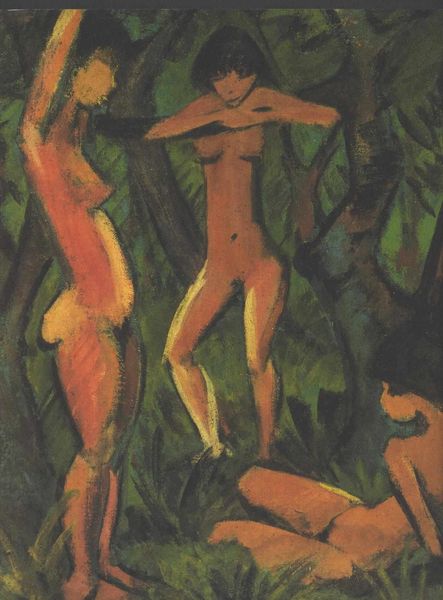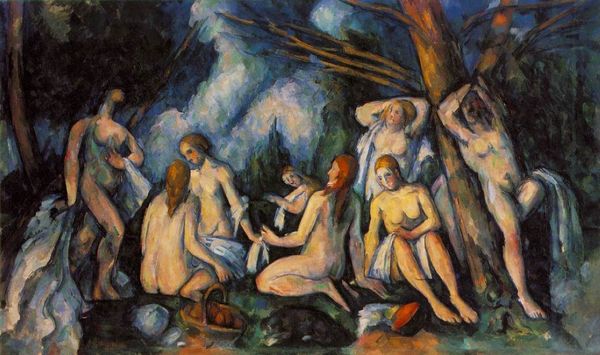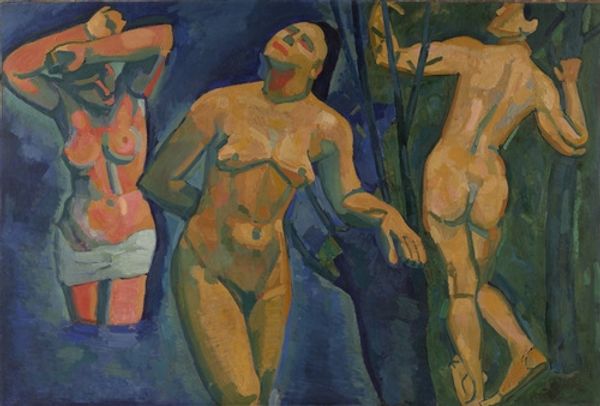
painting, oil-paint
#
fauvism
#
painting
#
oil-paint
#
landscape
#
figuration
#
oil painting
#
female-nude
#
group-portraits
#
nude
Dimensions: 32.5 x 45.8 cm
Copyright: Public domain US
Curator: Let’s turn our attention to André Derain’s “Bathers,” created around 1908 using oil paint. Editor: What immediately strikes me is the density, how these six figures occupy almost every available inch of the canvas, creating a solid, almost sculptural form through their arrangement. Curator: And consider the historical context. During this time, there was an evolving vision of the female nude, often depicted in relation to nature. We might think of the classical Venus, or even some interpretations of Eve, but Derain seems to disrupt those idealized connections. Editor: Absolutely. He breaks from the soft lines and idealized forms you often see. Here, the bodies are robust, rendered with thick brushstrokes and a deliberate distortion of anatomical proportions. It’s as if he’s less concerned with a perfect likeness and more focused on capturing the raw physicality. Curator: But the very presence of the bather is itself significant. In classical terms, water possesses a dual symbolism. It represents both purification and destruction, thus associating women in mythology with power, knowledge, beauty and the perilous and hidden. These women are presented with little to no background, removing specific geographic symbolism while also suggesting vulnerability. Editor: I think that stripping away those classical associations really directs our attention to the formal elements. Notice the restricted palette, largely earth tones punctuated by areas of deep green and touches of white in the fabric. It enhances the solidity I mentioned and further binds the figures into a single, weighty mass. Curator: Yes, a heavy weight is created. This also adds to a modern re-contextualization. Consider that images of the bather become, for the Modernist painter, an emblem of what the Modernists considered truly important. I suggest it indicates liberation for both art and those often-oppressed, a theme that we can track over time in a non-linear but fascinating study of history and visual language. Editor: That idea of liberation through form is very persuasive. The painting, then, isn’t just about representation; it's about the active creation of meaning through the artistic process itself. Curator: Derain certainly leaves us much to consider about enduring representations of women, and humanity more broadly. Editor: An excellent example of how close looking can unlock multiple layers of meaning.
Comments
No comments
Be the first to comment and join the conversation on the ultimate creative platform.

